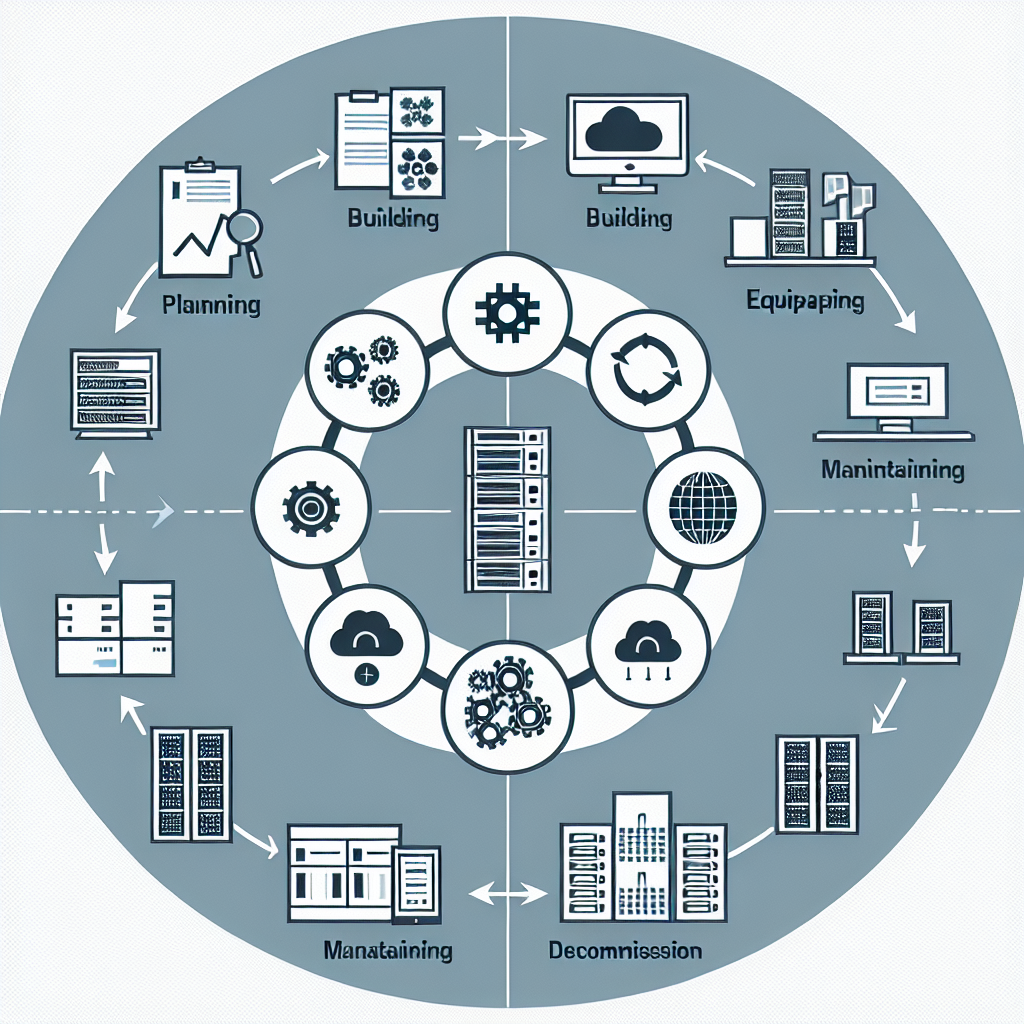Data centers are essential facilities that house critical IT infrastructure and support the digital operations of businesses and organizations. From storing and processing data to hosting servers and networking equipment, data centers play a crucial role in keeping businesses running smoothly. However, managing a data center throughout its lifecycle – from planning and construction to decommissioning – can be a complex and challenging process.
Planning is the first phase of data center lifecycle management, where organizations assess their current and future IT needs and develop a strategic plan for their data center infrastructure. This involves determining the size, location, and layout of the data center, as well as selecting the appropriate technology and equipment to support their operations. It is crucial to consider factors such as power and cooling requirements, security measures, and scalability to ensure that the data center can meet the organization’s needs now and in the future.
The next phase of data center lifecycle management is design and construction, where the data center is built according to the specifications outlined in the planning phase. This involves working with architects, engineers, and construction contractors to design and build the facility, install the necessary equipment, and ensure that it meets industry standards and regulations. During this phase, organizations must also consider factors such as energy efficiency, sustainability, and disaster recovery to ensure the data center is reliable and resilient.
Once the data center is operational, the focus shifts to management and maintenance, where organizations must monitor and optimize the performance of their data center to ensure that it remains efficient and reliable. This involves regular maintenance of equipment, monitoring power and cooling systems, and implementing security measures to protect the data center from cyber threats and physical hazards. It is also important to regularly assess and update the data center’s technology and infrastructure to keep up with evolving industry trends and best practices.
As data centers age and technology advances, organizations may need to consider decommissioning their data center and migrating to a new facility or cloud-based solution. Decommissioning involves shutting down and removing equipment, disposing of assets, and ensuring that data is securely transferred or erased according to industry regulations. This phase of data center lifecycle management requires careful planning and coordination to minimize downtime and ensure a smooth transition to a new data center environment.
In conclusion, data center lifecycle management is a comprehensive process that involves planning, construction, management, and decommissioning to ensure that data center facilities are efficient, reliable, and secure. By carefully managing each phase of the data center lifecycle, organizations can optimize their data center operations, reduce costs, and adapt to changing technology and business needs. With proper planning and execution, organizations can ensure that their data center facilities continue to support their operations and drive business success for years to come.


Leave a Reply